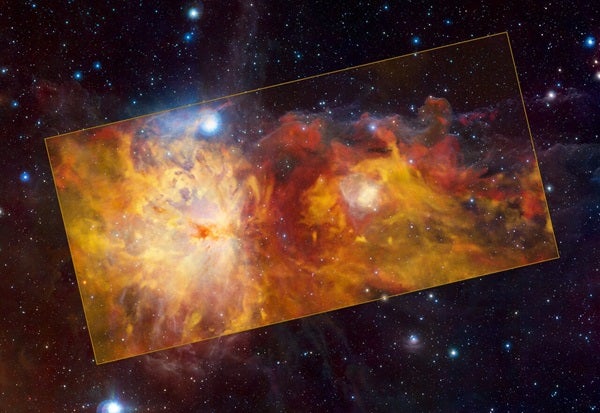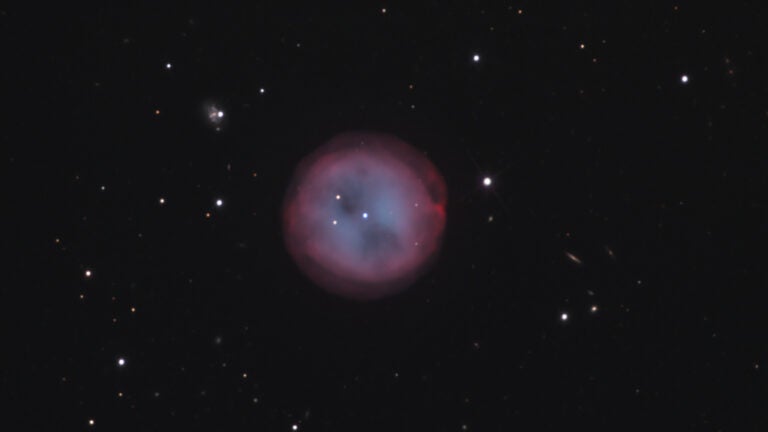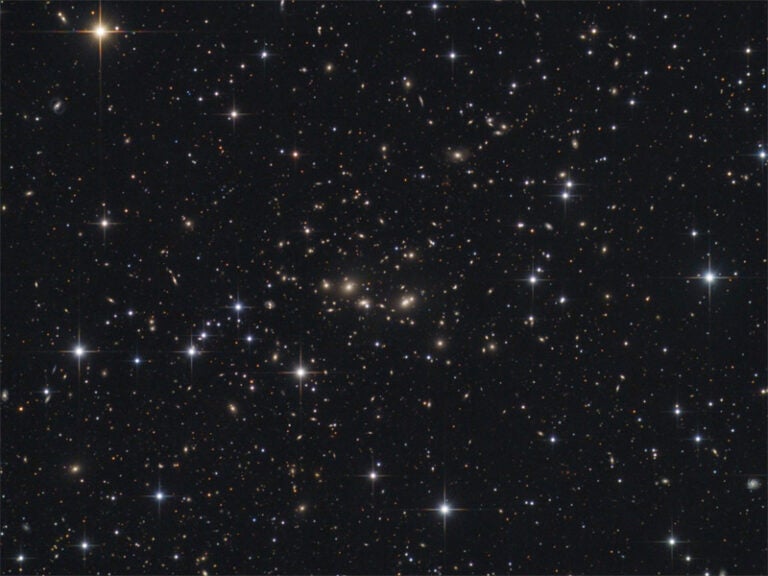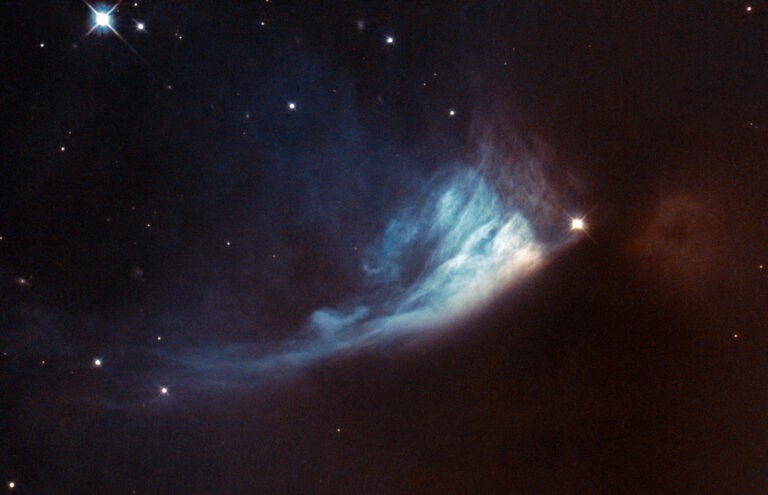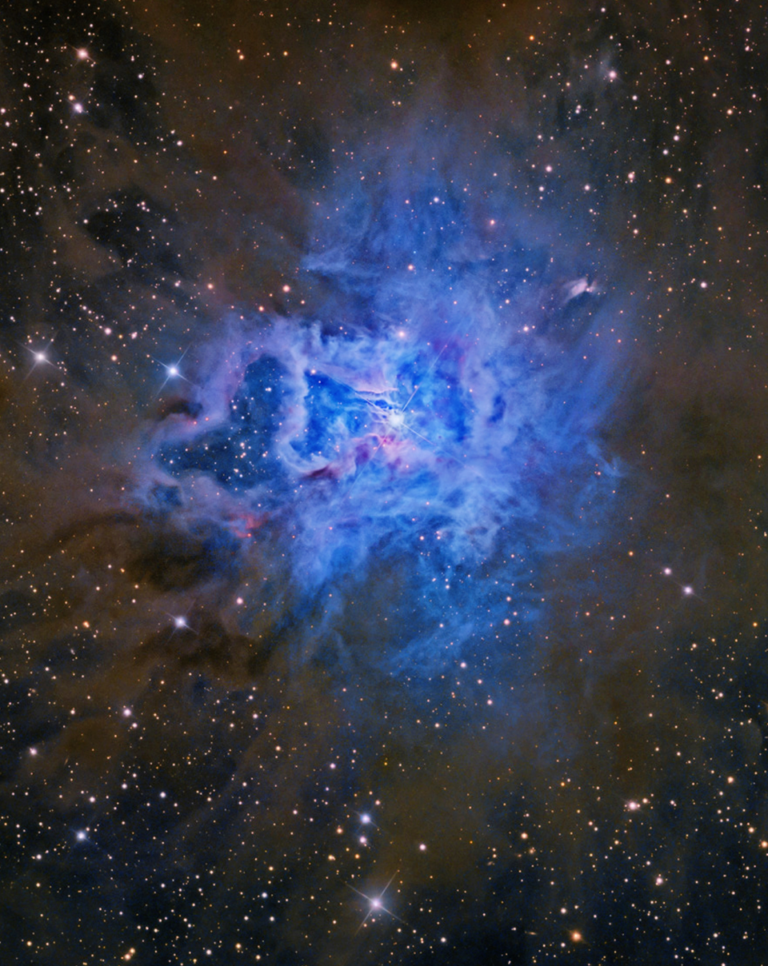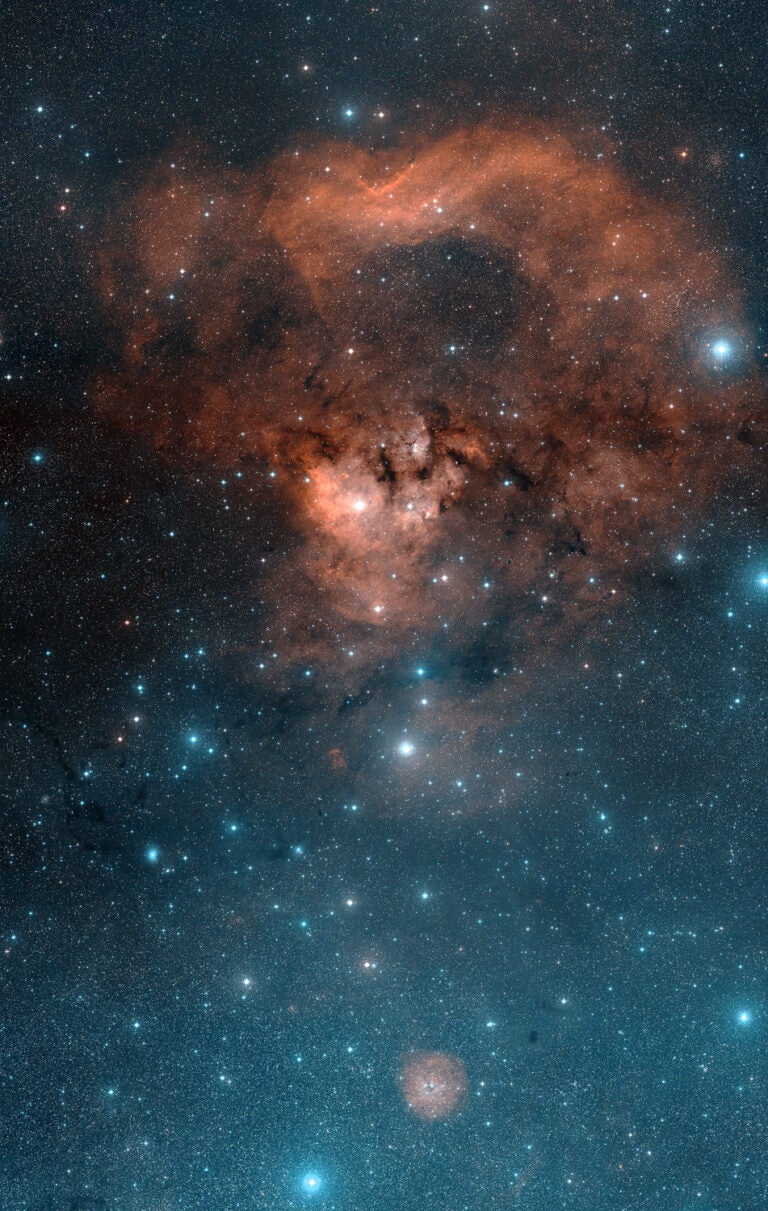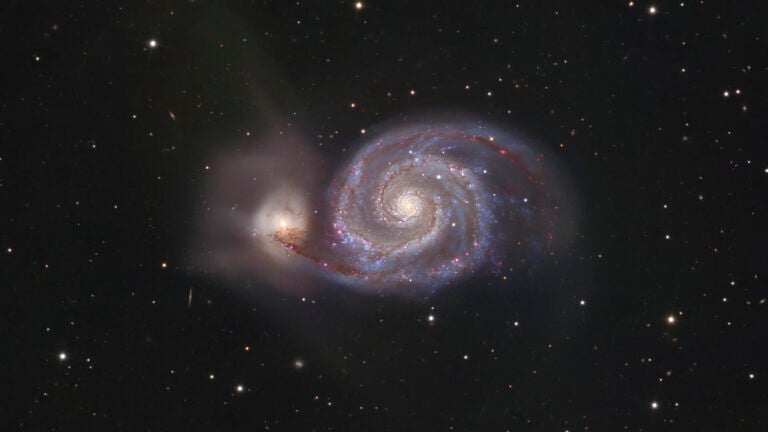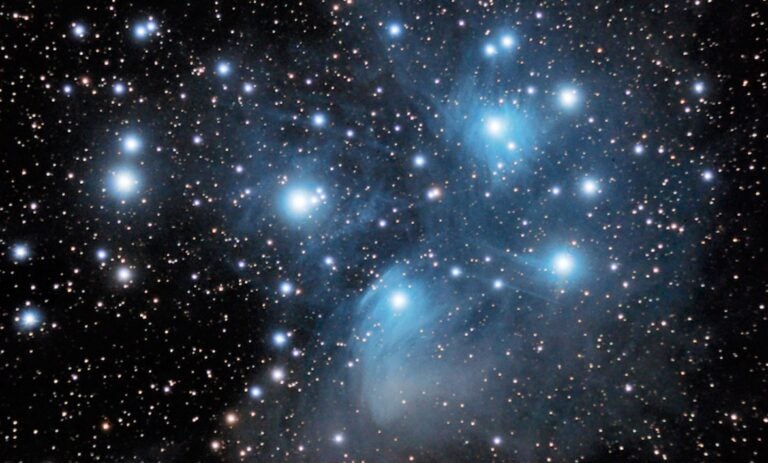You might be familiar with the famous Orion Nebula (M42), named for the constellation where it resides. But that bright target isn’t the only treasure hidden within the Hunter. This stunning shot captures the Flame Nebula (NGC 2024) in all its fiery glory. The blazing emission nebula takes up the left side of this image, which combines observations at radio wavelengths (inset rectangle with orange and red) taken by the Atacama Pathfinder Experiment’s Supercam instrument with infrared data (exterior, black and blue) collected using the Visible and Infrared Survey Telescope for Astronomy, both in Chile. Also visible are the Horsehead Nebula (NGC 2023) at upper right and the reflection nebula NGC 2023 — the bright, round yellow-white region — just to the right of center.
Contrary to how you might want to interpret them, the fiery colors in this image don’t depict temperature. Instead, they show the velocity of the gas in these giant clouds as the entire complex, currently some 1,300 to 1,600 light-years distant, moves away from Earth. The more distant, redder regions captured here are receding faster than the closer portions, which appear orange and yellow.
The radio image was taken as part of a larger survey aimed at helping researchers better understand the Orion Molecular Cloud — a vast star-forming complex that includes both the Flame and Orion nebulae, plus many more.

